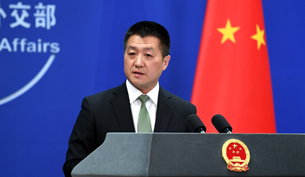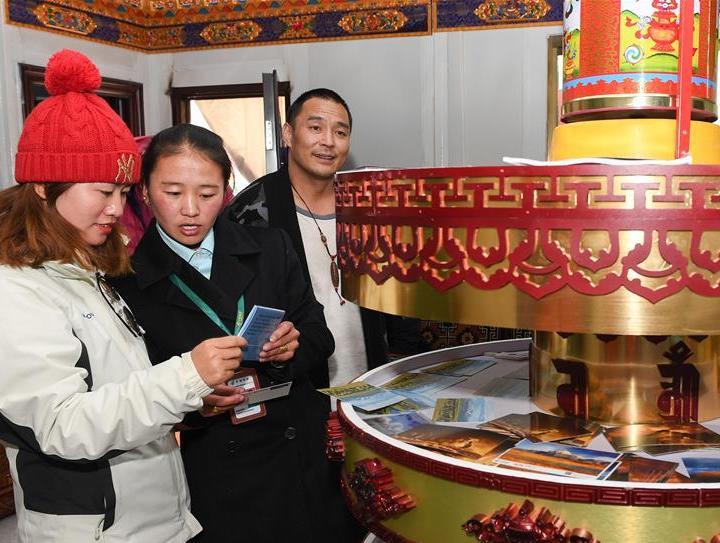B&R kindles confidence, inspiration around world
Five years on, the China-proposedBelt and Road(B&R) initiative has offered the world an innovative approach to development and inspiration, experts said on Sunday.
From 2013 to 2018, the initiative has turned from proposal into action and has become the world's largest international cooperation platform, China Media Group said in a report on Saturday.
As of May, China has signed 103 cooperation documents with 88 countries, regions and global organizations, the report said.
China's ports now connect with 600 global ports to ensure maritime connectivity and the number of freight train services have risen to 10,000 between China and EU, the largest trading partner.
Trade in goods with B&R countries and regions totaled more than $5 trillion and foreign direct investment to these destinations hit $70 billion during 2013-17 and in 2017, China's trade with B&R partners accounted for 40 percent of global trade in goods in terms of value.
Innovation
Bai Ming, a research fellow at the Chinese Academy of International Trade and Economic Cooperation in Beijing, told the Global Times on Sunday that Chinese ingenuity was a hallmark of the B&R initiative and contributed to global economic development.
Chinese innovation concentrated on international industrial capacity cooperation, overseas industrial zones and connectivity, Bai said.
The rail cargo service between China and Europe as well as other regions, for example, is a China-led remake of the existing international rail transport that spans the Eurasian landmass, he noted.
Before the creation of such trains, an intercontinental railway freight service existed but was not functioning much, Bai said. "There was road and train, but no traffic and cargo."
"Only when the Chinese solution greatly reduced travel time between the production region and consumption market could the market tap new-found demand," Bai said.
Freight trains have cut travel time to around two weeks and a wide range of cargo - IT products, cars, machines and grain - are transported, according to a statement sent to the Global Times by State-owned operator China Railway Corp.
Behind improved connectivity, innovations were made to track containers with satellites to ensure goods' safety, according to the CRC statement. Cold-chain logistics allowed more valuable goods such as food to be transported and improved efficiency when trains switch between the different rail gauges along its route.
Before China proposed its own idea on how to further global economic growth, there were two main types of innovation: the American or the European approach, said Wang Yiwei, director of Renmin University of China's Institute of International Affairs.
The American innovation "emphasizes saving labor and improving efficiency. The European emphasizes saving resources and energy via sustainable development," Wang told the Global Times on Sunday.
"The two types of development strategies left developing countries in mid air as they have ample labor, rich resources but lacked skilled laborers and were weak in technology."
Unable to tap their strengths, developing countries "were marginalized in global economic development," he said.
B&R supersedes the old ways, Wang said.
"It is suitable to the needs and circumstances of emerging markets and combines globalization with localization, local strengths and global connectivity," Wang said. "It also features integration of development strategies of partner countries and regions."
He cited Sri Lanka's Hambantota Port as an example.
Ravaged by decades of civil war, there was little chance in the traditional sense that the port could grow into a major functioning port within years, as a port typically needs dozens of years to mature, Wang explained.
"However, with investment by China Merchants Port Holdings Company, which connected the port into a network of over 70 global ports, the port gained the ability to generate a sustained revenue and the Chinese firm got a 99-year lease agreement."
Five years in the making, success stories abound today from the plateaus of East Africa to the steppes of Central Asia, say Chinese experts.
"The Chinese Dream stimulates countries to have confidence to realize their own dreams of development," Wang said.
Your Comment
Name E-mailRelated News
-
-
China, Kazakhstan agree to work together for respective national rejuvenation
Chinese President Xi Jinping held talks with Kazakh President Nursultan Nazarbayev in Beijing on Thursday, and they agreed to consolidate the traditional friendship and work together to forge ahead in achieving respective national rejuvenation of their countries.
-
-
China donates medicines to Uganda's friendship hospital
China on Thursday donated medicines and medical supplies to China-Uganda Friendship Hospital in the Ugandan capital Kampala.
-
-
Chinese tech to turn Mid-East desert into arable land
New Chinese technology is expected to convert part of a desert in the Middle East into arable land, which will also serve countries along the Belt and Road route, a research team said Tuesday.
-
-
'Crazy Rich Asians' draws immigrant parents to the movies
When"CrazyRichAsians"surpassedexpectationsandgrabbedthetopspotattheboxofficeinitsopeningweekend,thefilmalsopulledoffanothersurprisingfeat:ItputAsiansofacertainageintheaterseats.InthisThursday,Aug.
-
-
SCO to stage its largest drill in Russia
The counter-terrorism drill of Shanghai Cooperation Organization (SCO) countries, scheduled to begin on Wednesday, is the largest under the SCO charter with the participation of India and Pakistan for the first time, and Chinese experts say the drill will greatly contribute to stability in Central and South Asia.







